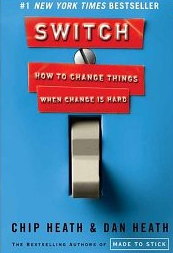By Deborah Fishman
An all-volunteer magazine put together by a geographically diverse, online community of young adults 22-40, PresenTense Magazine has always been a collaborative enterprise. As such, weve made ample use of many Google products, storing and sharing articles in Docs, communicating in Chat, and organizing and tracking article progress in Sites. Yet the lack of integration has made using all these tools in concert a challenge, and we are always interested in exploring better ways to perform these tasks.
For our tenth issue, PresenTense Magazine launched the Digital Issue the first-ever print magazine to be published entirely in Google’s new tool for collaboration, Google Wave. The platform allowed us to pioneer new horizons for journalism by seeking to address a key challenge for journalists today: how to collaborate in a digital age.
Google Wave enticed us with the ability to collaborate on all aspects of the magazine production in a single package, as well as offering several new and exciting features. For instance, playback allows users to review the sequence of changes and easily restore a document to a previous version. Two modes of engaging with waves edit and reply give greater flexibility in editing documents and leaving comments for writers. Since edits and replies are updated in real time, authors and editors can interact naturally, as if in an in-person conversation. Wave also includes the ability to add images, maps, videos, and other gadgets right in the collaboration space.
It was especially fitting that we set out to explore Google Wave for our Digital Issue, focused on the Digital Age and how it is affecting young Jewish community- and identity-building today. Google Wave allowed us to take advantage of the very digital trends and technologies we were discussing, to produce content to act as the starting place for a larger conversation. We found that, while rough around the edges as a pre-Beta product, Google Wave has some real potential for online collaboration.
Ready to embark on a whole new world of Wave discovery, we soon realized that our first hurdle was getting on Wave to begin with. A collaboration tool only works when your co-collaborators also have access. Each issue of PresenTense Magazine is the product of over 70 young Jews writers, editors, advisory committee members, and art team members who work together through the creative process, from the initial brainstorming phase through the final production. Wave invites are a scarce commodity, and for 70 contributors, you need an allocation strategy. Googles arbitrary approval process further baffled our editorial team.
Even with an approved Wave account, not all writers were as eager to ride the Wave as we had hoped. The great flexibility offered by the Wave platform belies the fact that Wave is to many unintuitive. It took significant effort for many writers and editors to learn such Wave basics as how to reply to a message, causing a great deal of frustration. Even those who persevered encountered a fair share of frustrations from frequent crashes, missing features, and various other unexplained occurrences. For those accustomed to working over e-mail and chat, the lack of integration with GMail meant many participants did not notice changes until days later.
Along the way we also came across some collaboration-enhancing perks. When posting in real-time, one author and a commenter discovered they were able to have a brief exchange of ideas inside the Wave and then delete all but what they wanted to preserve for others to see. Another pair of authors were able to “meet” each other and converse when they bumped into each other on their articles section contents page.
PresenTense Magazine is generally published as a glossy, in-print magazine. One of our defining features has been our full-color photographs and artwork, skillfully laid out alongside articles and other content. Wave does offer the ability to drag-and-drop images into an article, and you can even view them as a slideshow or one at a time as full-screen images. However, inside a blip the images appear as either small icons or full-size images taking up most of the page, and it’s not possible to wrap the surrounding text around them. The unsatisfying formatting was further complicated by Googles mysterious rules governing whether and how blips are indented, depending on where exactly one clicks and whether one selects edit or reply.
PresenTense Magazine is the foundation for a vibrant community. Over the past five years, our ten in-print issues have acted as a community organizing tool, bringing together hundreds of young Jews around the world with ideas and enthusiasm about the future of Jewish innovation. However, there are challenges inherent in grassroots work with young Jews spanning time zones around the world. The geographic distances involved provide the tremendous benefit of enabling us to incorporate different perspectives and start conversations that may never occur otherwise. But it can be difficult to find appropriate online collaboration tools that have all the functionality we need. We found a lot to like on Google Wave, and we look forward to future improvements to the medium.
Deborah Fishman is the Network Animator for the PresenTense Group, engaging and empowering the PresenTense community to explore issues facing the Jewish People. As the volunteer managing editor of PresenTense Magazine, Deborah has managed hundreds of volunteer writers, editors, and visionaries.
Lisa Colton, Founder and President of Darim Online, was a member of the advisory team for Presentense Magazine’s Digital issue.


 sion. A few comments on the videos are posted here – they are fascinating to browse to gain insight into youth
sion. A few comments on the videos are posted here – they are fascinating to browse to gain insight into youth (and not-so-youth) culture today of both Jews and non-Jews. Timing is everything, and the chance of being exposed to anything by or about Jews is dramatically increased during the Hanukkah season. It is no coincidence that these 2 videos hit their rocket-like trajectory on the 3rd and 4th days of Hanukkah. Familiarity breeds popularity. In the case of the Maccabeats, their song Candlelight was a parody of one of the most popular songs in the country. Almost every kid in the country had already memorized Dynamite by Taio Cruz and only had to learn the new Hanukkah lyrics in the Maccabeats’ parody.
(and not-so-youth) culture today of both Jews and non-Jews. Timing is everything, and the chance of being exposed to anything by or about Jews is dramatically increased during the Hanukkah season. It is no coincidence that these 2 videos hit their rocket-like trajectory on the 3rd and 4th days of Hanukkah. Familiarity breeds popularity. In the case of the Maccabeats, their song Candlelight was a parody of one of the most popular songs in the country. Almost every kid in the country had already memorized Dynamite by Taio Cruz and only had to learn the new Hanukkah lyrics in the Maccabeats’ parody. 
 So let us rejoice for the blessing of these two incredible viral videos that have infused our Jewish lives with such excitement and pride during this holiday season. And let us contemplate a time when individuals in our Jewish community can achieve national recognition in between holidays, using the power of music, video, and genuine high-quality talent to not only entertain, but educate both Jewish and non-Jewish audiences about our Jewish rituals, values, and history.
So let us rejoice for the blessing of these two incredible viral videos that have infused our Jewish lives with such excitement and pride during this holiday season. And let us contemplate a time when individuals in our Jewish community can achieve national recognition in between holidays, using the power of music, video, and genuine high-quality talent to not only entertain, but educate both Jewish and non-Jewish audiences about our Jewish rituals, values, and history.  ou’re looking for the gift that keeps on giving, right? I’ve got just the thing for you. Pick up a copy of Beth Kanter and Allison Fine’s book
ou’re looking for the gift that keeps on giving, right? I’ve got just the thing for you. Pick up a copy of Beth Kanter and Allison Fine’s book  This post is part of
This post is part of  I am currently re-reading
I am currently re-reading